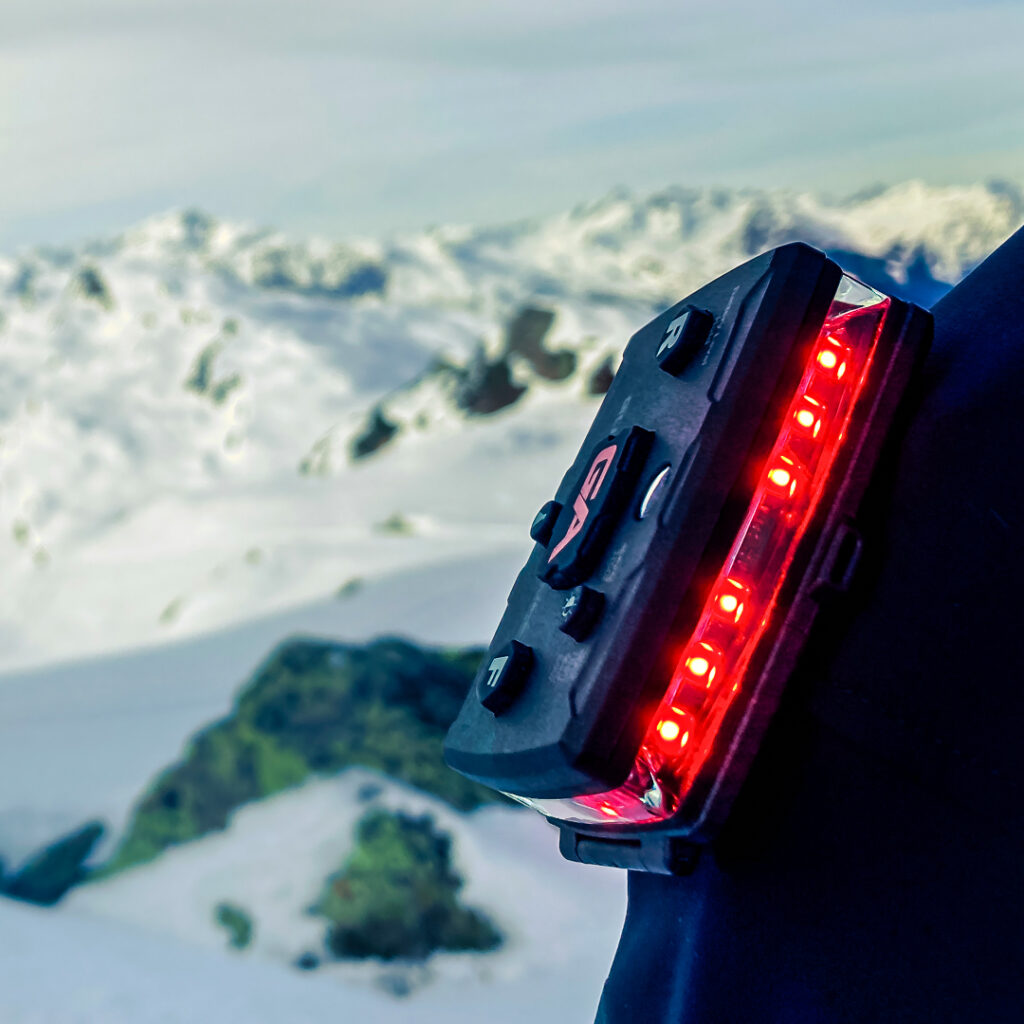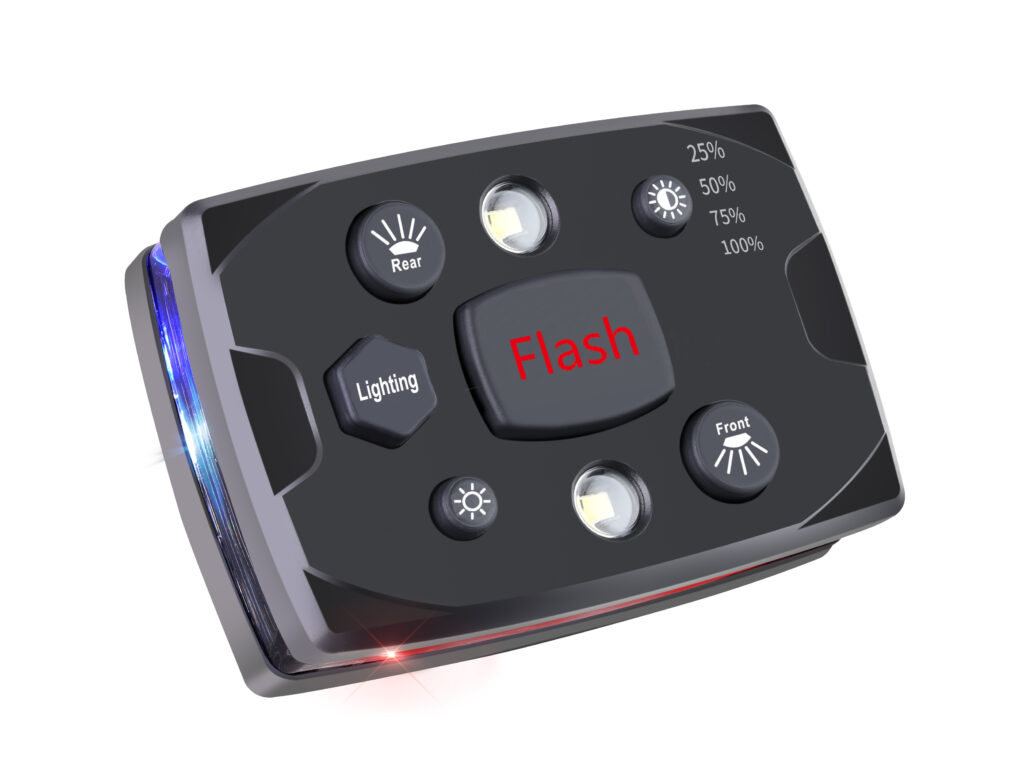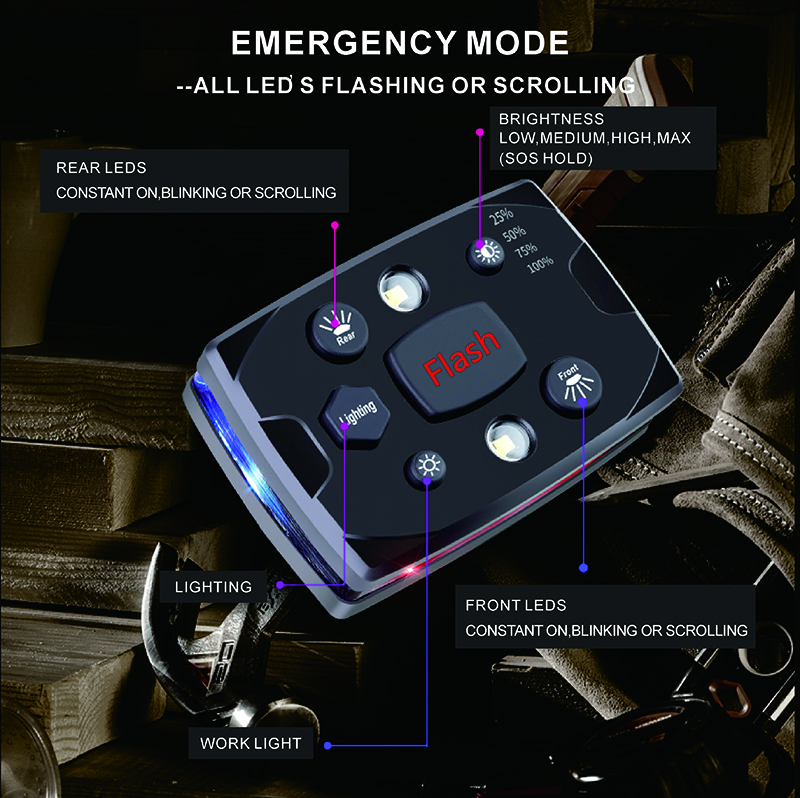Every paramotor pilot needs a high-visibility strobe light because it dramatically increases your visibility to other aircraft, reduces collision risk, and helps ensure compliance with aviation safety regulations. Furthermore, strobe lights can be the difference between life and death during low-light conditions. But why exactly should every pilot invest in this essential safety equipment?

Quick Safety Stats: The Numbers Don’t Lie
| Safety Statistic | Key Finding |
|---|---|
| Pilot Error Rate | More than 50% of paramotoring accidents are due to pilot error |
| Visibility Requirements | FAA requires strobe lights visible for at least 3 statute miles |
| New Pilot Risk | 90% of accidents happen within the first 10 flights |
| Near Miss Frequency | Near misses are frequent among paramotor pilots |
| Detection Challenge | Paramotors look no different to a flock of seagulls on radar |

Table of Contents
What Makes Strobe Lights Essential for Paramotor Safety?
A strobe light could be one of the most important items you add to your paramotor, as collisions happen and near misses are frequent. Additionally, these lights serve as your primary defense against mid-air collisions. Most importantly, they make you visible to other aircraft when you might otherwise be invisible.
The Hidden Dangers of Poor Visibility
Many paramotor pilots underestimate how invisible they are to other aircraft. Commercial and military pilots rarely look out of their windows, and paramotors can look no different to a flock of seagulls on radar. Consequently, this creates a dangerous situation where larger aircraft might not see you coming.
Key Visibility Challenges:
- Low radar signature: Paramotors appear similar to birds on radar systems
- Pilot awareness: Many commercial pilots don’t actively scan for small aircraft
- Weather conditions: Fog, haze, and low light reduce natural visibility
- Background camouflage: Your wing can blend into sky or terrain
How Do Aviation Regulations Support Strobe Light Requirements?
According to FAR Part 103, an anticollision light must be a flashing or stroboscopic device of sufficient intensity to be visible for at least 3 statute miles. Therefore, using a proper strobe light helps you meet federal aviation requirements. Moreover, compliance protects you legally if an incident occurs.
Understanding FAR Part 103 Requirements
The Federal Aviation Administration has specific guidelines for ultralight aircraft, including paramotors. These regulations exist to protect all airspace users. Subsequently, following these rules keeps you safe and legal.
Important regulatory points:
- Strobe lights must be visible for 3+ statute miles
- Required during certain flight conditions
- Must meet specific intensity standards
- Help identify aircraft type to other pilots
When Should You Use Your Paramotor Strobe Light?
You should use your paramotor strobe light during dawn, dusk, overcast conditions, and any time visibility is reduced below optimal levels. However, many safety experts recommend using strobes during all flights. Additionally, consistent use builds good safety habits.
Critical Times for Strobe Use:
- Dawn and dusk flights – When natural light is limited
- Overcast days – When you blend into gray skies
- Hazy conditions – When atmospheric visibility drops
- High traffic areas – Near airports or popular flying zones
- Over populated areas – Where emergency aircraft operate
Flight Condition Visibility Chart
| Condition | Natural Visibility | Strobe Necessity |
|---|---|---|
| Clear sunny day | Excellent | Recommended |
| Overcast skies | Poor | Essential |
| Dawn/Dusk | Limited | Critical |
| Foggy weather | Very poor | Absolutely required |
What Types of Strobe Lights Work Best for Paramotors?
The best paramotor strobe lights are LED-based, lightweight, weatherproof, and offer multiple flash patterns for different flight conditions. Furthermore, they should provide long battery life and easy mounting options. Most importantly, they must meet FAA visibility requirements.
Top Strobe Light Features to Consider:
Power and Visibility:
- LED technology for brightness and efficiency
- 24W LEDs that comply with FAR 103 regulations
- Multiple intensity settings
- Various flash patterns (steady, slow flash, rapid strobe)
Practical Features:
- Lightweight design (under 200 grams)
- Weatherproof construction (IP65 rating or better)
- Quick USB charging capability
- Easy mounting system
- Long battery life (4+ hours minimum)

How Do Strobe Lights Reduce Paramotor Accident Rates?
Strobe lights significantly reduce accident rates by making paramotors visible to other aircraft pilots who might otherwise miss them entirely. Additionally, they help in emergency situations by making rescue easier. Moreover, they prevent the most common cause of serious paramotor incidents.
The Statistics Behind Visibility Safety
More than 50 percent of paramotoring accidents are due to pilot error, but visibility-related incidents are preventable. Furthermore, 90% of accidents happen within the first 10 flights, making safety equipment crucial for new pilots.
How strobes help prevent accidents:
- Increase detection range for other aircraft
- Provide early warning to approaching pilots
- Help air traffic controllers spot you on radar
- Make search and rescue easier if needed
- Reduce pilot stress about being seen
Why Do New Pilots Especially Need Strobe Lights?
New paramotor pilots especially need strobe lights because they’re statistically more likely to have accidents and may not recognize dangerous situations as quickly as experienced pilots. However, strobe lights provide an extra safety margin during the learning process. Additionally, they help build confidence in the air.
New Pilot Risk Factors:
- 90% of accidents happen within the first 10 flights
- Less experience reading weather conditions
- Slower reaction times to developing situations
- May fly in marginal conditions unknowingly
- Still learning airspace awareness skills
Building Safe Flying Habits Early
Using a strobe light from your first flight creates excellent safety habits. Subsequently, you’ll never forget this essential piece of equipment. Moreover, it becomes second nature to check your strobe before every flight.
What Are the Real-World Benefits of Using Strobe Lights?
Real-world benefits of paramotor strobe lights include preventing close calls with aircraft, easier identification by ground personnel, and increased confidence when flying in busy airspace. Furthermore, they provide peace of mind for both pilots and their families. Most importantly, they can save your life.
Pilot Testimonials and Experiences:
Many experienced pilots report that strobes have prevented potential collisions. Pilots who have been flying for 10+ years consistently use powerful LED strobe lights for added safety. Additionally, instructors often require students to use strobes during training.
Common pilot reports:
- Other aircraft pilots acknowledging their presence on radio
- Ground personnel easily spotting them during events
- Increased confidence when flying near airports
- Better visibility to rescue teams during emergency landings
How Should You Mount and Maintain Your Strobe Light?
Mount your paramotor strobe light on the highest point of your frame or wing where it won’t be blocked by lines or fabric, and maintain it by regularly checking battery levels and cleaning the lens. However, avoid mounting locations that interfere with your reserve parachute deployment. Additionally, ensure all connections are secure before each flight.
Best Mounting Practices:
Optimal locations:
- Top of paramotor frame
- Wing tip (if manufacturer approved)
- Helmet (secondary location)
- Harness shoulder area
Maintenance checklist:
- Check battery level before each flight
- Clean lens monthly or after dusty conditions
- Inspect mounting hardware regularly
- Test all flash patterns periodically
- Keep spare batteries available

Are There Any Downsides to Using Strobe Lights?
The main downsides to paramotor strobe lights are minimal weight addition, battery management requirements, and potential distraction to other pilots if used incorrectly. However, these minor inconveniences are far outweighed by safety benefits. Moreover, modern LED strobes minimize these concerns.
Managing Minor Drawbacks:
Weight concerns:
- Modern LED strobes weigh less than 200 grams
- Minimal impact on paramotor performance
- Easy to integrate into existing setup
Battery management:
- Quick USB charging makes maintenance simple
- Long battery life reduces charging frequency
- Portable power banks provide backup power
People Also Ask: Common Strobe Light Questions
Q: Do I legally need a strobe light on my paramotor?
A: FAR Part 103 requires anticollision lights visible for at least 3 statute miles during certain conditions, but specific requirements vary by flight conditions and local regulations. However, they’re always recommended for safety.
Q: How long do paramotor strobe light batteries last?
A: Most quality LED strobe lights provide 4-8 hours of continuous operation, with quick USB charging allowing for easy recharging between flights.
Q: Can strobe lights interfere with my paramotor’s electronics?
A: Modern LED strobe lights are designed to minimize electromagnetic interference and shouldn’t affect properly shielded paramotor electronics or GPS devices.
Q: What’s the difference between steady lights and strobe lights?
A: Strobe lights flash intermittently and are more attention-grabbing, while steady lights provide constant illumination. Strobes are generally more effective for collision avoidance.
Q: How much do good paramotor strobe lights cost?
A: Quality paramotor strobe lights typically range from $50-200, with professional-grade units offering better durability, brightness, and battery life.
Q: Where should I mount my strobe light for maximum visibility?
A: Mount your strobe at the highest unobstructed point on your paramotor frame or wing, ensuring 360-degree visibility without interfering with lines or reserve deployment.
Conclusion: Your Safety Investment
Investing in a high-visibility strobe light is one of the smartest decisions any paramotor pilot can make. With more than 50% of paramotoring accidents due to pilot error and frequent near misses, every safety advantage matters. Furthermore, meeting FAA visibility requirements keeps you legal and protected.
Remember, your strobe light serves as your primary defense against mid-air collisions. Moreover, it provides peace of mind for both you and your loved ones. Most importantly, it could save your life during that one critical moment when visibility makes all the difference.
Take action today: Research quality strobe lights that meet your needs and budget. Additionally, make strobe light usage part of your pre-flight checklist. Your future self will thank you for this essential safety investment.
For more paramotor safety equipment and expert advice, visit OBO Tech – your trusted partner in aviation safety technology.
